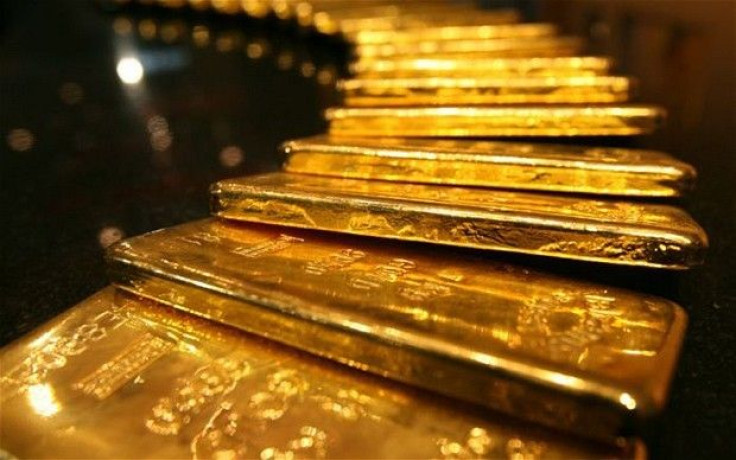Gold Recovers as Dollar Retreats, Buyers Step In

LONDON (REUTERS) -- Gold prices snapped three days of losses to rise in Europe on Wednesday, helped by a recovery in the euro versus the dollar, which eased negative currency effects on the precious metal, and by demand for physical gold at lower prices from Asia.
Spot gold was up 0.5 percent at $1,681.75 an ounce at 1025 GMT, while U.S. gold futures for April delivery were up $10.90 an ounce at $1,683.00.
The metal is down more than 6 percent since late February, having dropped sharply from the year's highs after U.S. Federal Reserve chairman Ben Bernanke held off signaling a further round of U.S. monetary easing in a key speech.
Open interest has fallen dramatically over the last week, indicating that many if not most of the longs that were initiated above $1,700 during the last month have been closed down, said Saxo Bank vice president Ole Hansen. This should help the market to stabilize.
We have wiped out the Bernanke move from January 25 and are back to square one, so to speak. Technically, last week's close is still pointing towards a deeper correction, but I would think decent support should come in towards $1,656, a 50 percent retracement of the 2012 rally.
Overall though, I think we have to get used to lower performances as the corrections these past few months may have dented many (people's) love affair with gold. Money managers especially will not be rushing back in unless we get a clear technical break, above $1,800.
The euro, a drop in which pushed gold below a key support level on Tuesday, triggering a near 2 percent fall in prices, firmed a touch but remains vulnerable to fears over whether Greece can pull off a bond swap deal needed to avert default.
A clutch of Greek pension funds and some foreign investors are holding back on the deal, raising fears that Greece may not secure an agreement with private creditors to cut its mountainous debt by the Thursday deadline.
Bad news on the deal could hurt gold in the short term. It tends to suffer from a stronger dollar, which makes commodities priced in the U.S. unit more expensive for other currency holders, and reduces the metal's appeal as an alternative asset.
Gold's positive correlation with the euro-dollar exchange rate stood at 55 percent on a 25-day rolling average. Its 20 percent positive correlation with U.S. stock markets suggests it is also trading in line with assets seen as higher risk.
RISK APPETITE DWINDLES
Yields on lower-rated euro zone government bonds rose as sentiment towards riskier assets deteriorated, due to worries that Greece may not win sufficient support for its debt restructuring.
Europe's equity markets edged lower in choppy trade as investors fretted about Greek debt and global growth risks, but they remained cautious of further extending the previous day's steep sell-off to one-month lows.
On the physical markets, gold traders in India, the world's biggest buyer of bullion, continued to purchase the metal as prices stayed near their lowest in a week, dealers said. The rupee's drop to seven-week lows kept a lid on buying, however.
Activity in the world's second largest bullion consumer, China, was also hit and miss.
While dips have encouraged some buying from China, interest has been rather sporadic, instead of the consistent support that gold seems to need right now, said UBS in a note. Our client flows were two-way and Shanghai Gold Exchange volumes for the two gold contracts have eased back to average levels.
Elsewhere South Africa's Gold Fields, the world's fourth largest gold producer, said 85 percent of its workforce had heeded a call for a 1-day nationwide strike.
Among other precious metals, silver was up 0.9 percent at $33.20 an ounce, also recovering from a sharp slide on Tuesday when it dropped more than 4 percent, its largest one-day decline this year.
Platinum group metals also fell in that session by the most this year, with platinum down more than 3 percent and palladium falling 5.5 percent. Both rebounded on Wednesday, with platinum up 0.8 percent at $1,622.49 an ounce and palladium up 1.8 percent at $675.50 an ounce.
Workers at Impala Platinum's Rustenburg mine, which was hit by a large-scale strike earlier this year, largely ignored the one-day work stoppage elsewhere in the republic.
(Reporting by Jan Harvey; Editing by Anthony Barker)
© Copyright Thomson Reuters 2024. All rights reserved.











